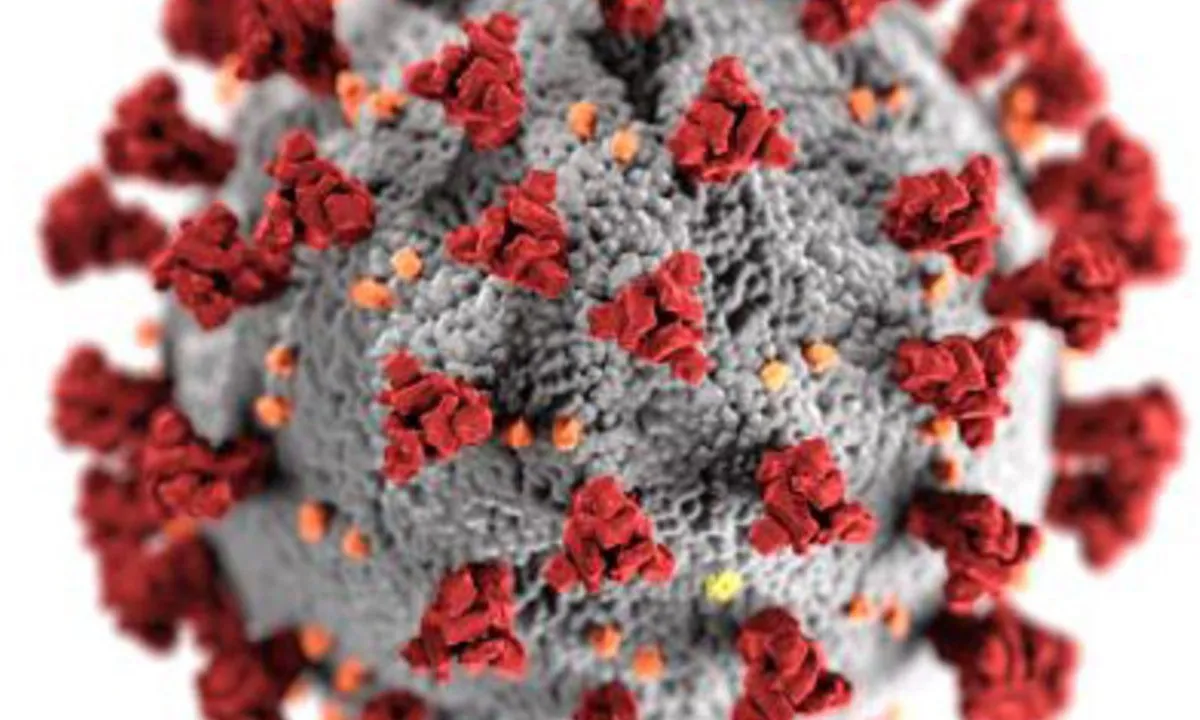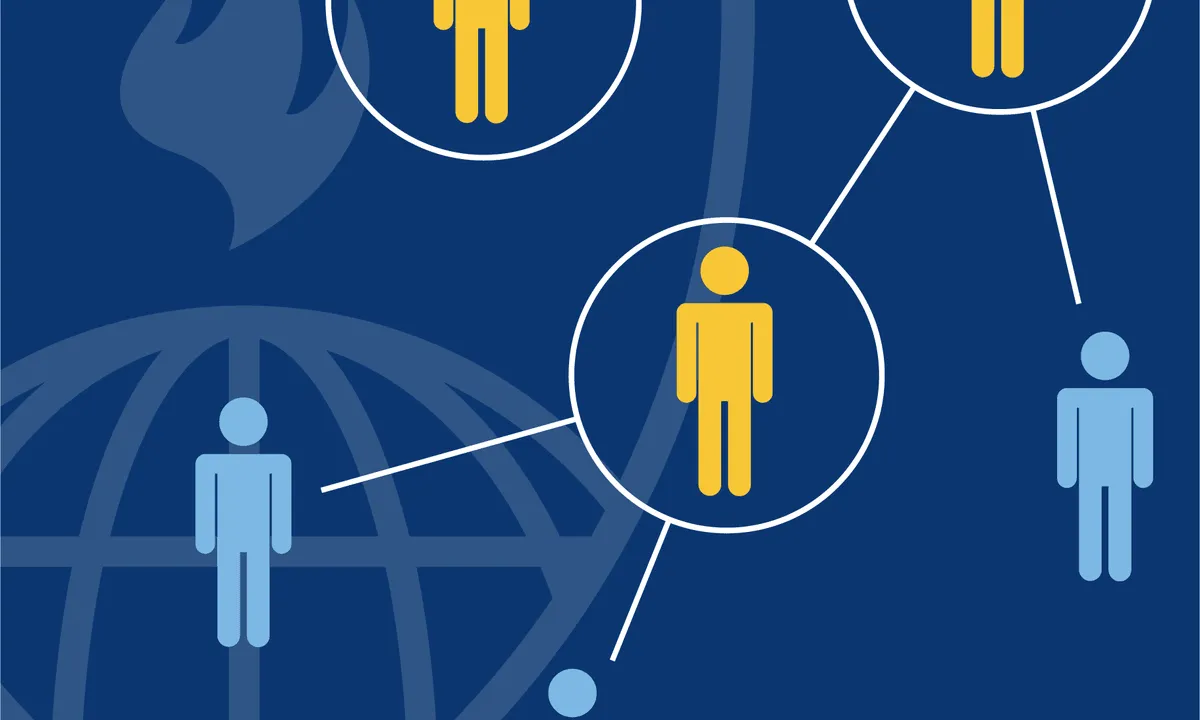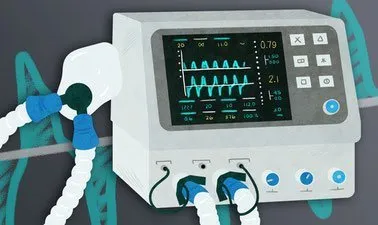
COVID-19 - A clinical update 
This course provides an in-depth clinical update on COVID-19. Through four videos and two peer-reviewed exercises, you will learn about the development, epidemiology, symptoms, and treatment of the virus. You will also gain the skills to create a campaign to shift your country's culture to embrace behaviors that can help suppress the epidemic. After completing this course, you will be armed with the knowledge and skills to make a difference and help to bend the curve. ▼
ADVERTISEMENT
Course Feature
![]() Cost:
Cost:
Free
![]() Provider:
Provider:
Coursera
![]() Certificate:
Certificate:
Paid Certification
![]() Language:
Language:
English
![]() Start Date:
Start Date:
21st Jul, 2023
Course Overview
❗The content presented here is sourced directly from Coursera platform. For comprehensive course details, including enrollment information, simply click on the 'Go to class' link on our website.
Updated in [May 25th, 2023]
This course, COVID-19 - A Clinical Update, provides an overview of the current understanding of the virus and its spread. It is designed to help learners understand the epidemiology of the virus, the symptoms associated with it, the risk factors for severe disease, and the best treatments available. The course also includes multiple choice questions and two peer-reviewed exercises to help learners understand the power of tracing cases and isolating those who are infected, as well as how to create a campaign to shift their country's culture to embrace behaviors that can lead to suppression of the epidemic. Upon completion of this course, learners will be armed with the knowledge and skills to make a difference and help to bend the curve.
[Applications]
Upon completion of this course, participants are encouraged to apply their knowledge and skills to help slow the spread of COVID-19. This can include creating campaigns to shift their country's culture to embrace behaviors that can lead to suppression of the epidemic, such as social distancing, wearing masks, and frequent handwashing. Participants can also use their knowledge to help trace cases and isolate those who are infected, as well as to provide accurate information about the virus to their communities.
[Career Paths]
Career Paths:
1. Epidemiologist: Epidemiologists are public health professionals who investigate patterns and causes of disease and injury in humans. They seek to reduce the risk and occurrence of negative health outcomes through research, community education, and health policy. Epidemiologists are in high demand due to the current COVID-19 pandemic, as they are responsible for tracking the spread of the virus and developing strategies to contain it.
2. Infectious Disease Physician: Infectious disease physicians specialize in the diagnosis and treatment of infectious diseases. They are responsible for diagnosing and treating patients with infectious diseases, as well as providing preventive care and education to the public. With the current pandemic, infectious disease physicians are in high demand as they are responsible for treating patients with COVID-19 and providing guidance on how to prevent the spread of the virus.
3. Public Health Educator: Public health educators are responsible for educating the public on health-related topics, such as disease prevention, nutrition, and health promotion. They are also responsible for developing and implementing health education programs and campaigns. With the current pandemic, public health educators are in high demand as they are responsible for educating the public on how to prevent the spread of COVID-19 and promoting healthy behaviors.
4. Data Scientist: Data scientists are responsible for analyzing large amounts of data to identify patterns and trends. They use their findings to develop strategies and solutions to address public health issues. With the current pandemic, data scientists are in high demand as they are responsible for analyzing data related to the spread of the virus and developing strategies to contain it.
[Education Paths]
Recommended Degree Paths:
1. Master of Public Health: This degree path focuses on the study of public health and epidemiology, and provides students with the knowledge and skills to understand and address public health issues. It covers topics such as health promotion, disease prevention, health policy, and health economics. It also provides students with the opportunity to develop their research skills and gain experience in the field. With the current COVID-19 pandemic, the demand for public health professionals is increasing, making this degree path an attractive option for those interested in helping to address the current health crisis.
2. Master of Science in Infectious Diseases: This degree path focuses on the study of infectious diseases, including the biology, epidemiology, and clinical aspects of infectious diseases. It provides students with the knowledge and skills to understand and address the current and future health challenges posed by infectious diseases. With the current COVID-19 pandemic, the demand for professionals with expertise in infectious diseases is increasing, making this degree path an attractive option for those interested in helping to address the current health crisis.
3. Doctor of Nursing Practice: This degree path focuses on the study of nursing practice and provides students with the knowledge and skills to understand and address the current and future health challenges posed by nursing practice. It covers topics such as health promotion, disease prevention, health policy, and health economics. With the current COVID-19 pandemic, the demand for nurses is increasing, making this degree path an attractive option for those interested in helping to address the current health crisis.
4. Master of Science in Biostatistics: This degree path focuses on the study of biostatistics and provides students with the knowledge and skills to understand and address the current and future health challenges posed by biostatistics. It covers topics such as data analysis, statistical modeling, and data visualization. With the current COVID-19 pandemic, the demand for biostatisticians is increasing, making this degree path an attractive option for those interested in helping to address the current health crisis.
Course Syllabus
How SARS-CoV-2 Causes Disease in Humans and Spread Around the World
Coronaviruses infect many species of animal including the bat. These RNA viruses frequently mutate particularly in bats, and chance mutations rendered the SARS-CoV-2 capable of readily infecting humans. The bat virus infected an intermediate host, possibly the Pangolin that was sold in the live fish and animal market in China. A key virulence (characteristic that allows a pathogen to cause disease) factor is the S protein which was the likely primary target of the mutations. This protein forms knobs on the outer surface of the virus that bind strongly to the ACE2 receptor on human respiratory epithelial cells. Binding is followed by internalization and within the cell the virus replicates its RNA using a replicase and assembles into a nuclear capsid in the host cell cytoplasm RNA is also translated into proteins that coat the outer surface of the virus. Once fully assembled the virus is exocytosed (released) from vesicles. The new viral particles can infect other cells and spread to other humans. Because of the inaccuracy of the viral replicase as the virus actively grows it produces point mutations. Some of these mutant virus more effectively infect cells. The alpha variant became prominent in the Winter and Spring of 2021 subsequently a more highly infectious variant the Delta variant that originated in India dominated and now a third variant, omicron that originated in South Africa is now spreading throughout the world and quickly dominating in Europe and the U.S. The virus first replicates in the throat and nasal passages and then spreads to the trachea, bronchi and alveoli where it induces inflammation and damage to the alveolar walls causing fluid to leak into the air exchanging sacks and interfering with oxygen exchange. If inflammation continues the alveolar walls become fibrosed (scarred) and further compromising oxygen exchange resulting in decreases in oxygen saturation (hypoxia). SARS-CoV-2 is able to spread efficiently from person to person primarily by droplets and aerosol (tiny particles that stay in the air for hours). Infection quickly spread throughout the world and caused a pandemic within 3 months. Humans were infected at the Huanan live fish and animal market. The infection initially was confined to workers in the market (point source) but then quickly spread person to person within the first 10 days. Because of the lack of travel restrictions early in the outbreak Chinese traveling from the area quickly spread the virus to many other countries. In the early phases lack of therapy or vaccine allowed the virus to move from person to person unchecked with a steep exponential curve with a doubling of cases every 2-3 days. This virus is one of the most infectious ever reported each infected person on average infecting 2.0 to 2.7 people, the alpha variant can infect 3.0-5.0, the Delta variant one person on average infects 5-8 individuals and the omicron 10-16. The last two variants can cause breakthrough infections in vaccinated individuals. Another characteristic that has allowed rapid spread is the existence of 40-60% asymptomatic or minimally symptomatic carriers. 10% are superspreaders infecting on average 10-80 others.COVID-19 Symptoms and Signs, Diagnosis, and Treatment
COVID-19 presents similarly to influenza. The most common symptoms are fever (>100.4 °F or 38°C), dry cough, and shortness of breath. Other common symptoms include marked fatigue, myalgias (muscle aches), headache, and sorethroat. Chest tightness can develop early in severe cases. Diarrhea and vomiting less commonly can be presenting complaints. Physical exam is usually unremarkable with the exception of fever, tachycardias (elevated pulse), an elevated respiratory rate and low oxygen saturation on room air. Lymphadenopathy is usually not present and pulmonary exam is unremarkable. Laboratory studies are nonspecific with a low lymphocyte count, low platelets, elevated CRP, and normal procalcitonin level. CXR is insensitive (60% sensitivity) chest CT being more sensitive and highly specific and is the study of choice in patients being considered for admission to the hospital. Treatment consists of supportive care by administering nasal O2 to maintain saturation above 92%. If nasal O2 fails to achieve appropriate oxygenation intubation and mechanical ventilation with PEEP (positive end expiratory pressure) is recommended and standard ARDS protocols should guide care. Septic shock with end organ damage can develop and standard sepsis protocols are recommended with the exception of fluid administration which should be cautious.Preventing the Spread of SARS-CoV-2
The critical management tool for this disease is prevention through infection control methods. The 5 tactics for preventing the spread of infection were promoted from the very beginning of the pandemic 1. Identification and isolation of infected individuals. 2. Quarantining all contacts of infected patients 3. Social (or physical) distancing of individuals >70 yo, 4. Social distancing by everyone and 5. Closing of schools, universities, and nonessential businesses. Modeling by the Imperial College revealed that suppression (instituting all 5 tactics) was the only way to reduce R sub 0 to 1 allows the infection to continue and demands for treatment then outstrip the capacity of each country's health system. Campaign methods will need to be used to encourage effective infection control practices by everyone. A major challenge particularly in the United States disinformation. If people don't believe the disease is a concern they will resist following the 5 practices. Another major issue has been the socioeconomic consequences of closing schools, universities and businesses. The blunt approach of shelter in place should be avoiding whenever possible. A combination of infection control practices best described using the Swiss cheese analogy should allow a partial opening. However, this approach requires consensus and alignment. Each individual must agree to 1. wear a face mask in any potential infectious environment. 2. Avoid crowds and when necessary limit the duration of exposure. 3. Avoid closed poorly ventilated spaces , outdoor gathering being preferred. 4. Practice 6 foot physical distancing. 5. Practice good hand hygiene 6. Avoid touching your face and eyes. and 7. Ignore rumors and conspiracy theories and listen to acknowledged experts. Governments and institutions must provide adequate supplies of Personal Protective Equipment (PPE), provide accessible, timely and effective testing, respond to positive tests by contact tracing and appropriate quarantine and isolation procedures, create consistent scientifically based messages about infection control, treatment and vaccination. Create effective supply chains to provide PPE, medications, and vaccines. Vaccination will provide the ultimate solution and efficacious vaccines will soon be available. If enough individuals receive the vaccine herd immunity can be achieved and the pandemic will end.Advanced Management of COVID-19 for Health Professionals (optional)
This optional module is designed with the clinician in mind. We will assume that students choosing to review this module have a strong medical background because technical terms will be used. Students opting to review this module will learn how to take the most effective history for patients with COVID-19 using an illness script that contains 4 key elements - epidemiology, timing of the progression of illness (illness pace), key symptoms, and past medical history. An assessment score NEWS-2 is described that helps to predict the course and severity of COVID-19. CXR and CT scan for the evaluation of patients are compared and contrasted. Next the roles of RTPCR, point of care Antigen testing and Antibody testing are compared. The use of other laboratory tests - CRP, D-dimer, ferritin, LDH, CPK, troponin and absolute lymphocyte count is reviewed. We show how the application of Bayes' theorem and a tiered differential diagnosis can increase the efficiency and effectiveness of SARS-CoV-2 testing. Next the management of hypoxia and respiratory failure in the ICU is covered in detail. ARDS is defined, and the 4 treatment tools: low volume ventilation, PEEP, fluid management, and prone positioning are described. The basic principles of high quality ICU care are described using the A2F bundle mnemonic. Specific considerations for management of COVID-19 ICU patients are discussed. Next management of COVID-19 patients on the medical-surgical floors is reviewed including admission, and management of proning in the conscious patient. The latest therapies are reviewed including oxygen administration, bronchodilators, diuretics, statins, ACE inhibitors and NSAIDS as well as Remdesivir and Dexamethasone. Judicious use of antibiotics is emphasized and a systematic step by step approach to the patient who is deteriorating clinically is outlined. Guidelines for deciding and managing hospital discharge are reviewed. Finally the pathogenesis and treatment of COVID-19 associate thrombosis are discussed.Pros & Cons

Informative and up to date content

Excellent instructor

Engaging and scientifically stimulating

Professionally addressed and well designed

Simple and easy to understand

No certificate provided

Needs more recent data and studies

No referal value for new learners
Course Provider

Provider Coursera's Stats at AZClass
Discussion and Reviews
0.0 (Based on 0 reviews)
Explore Similar Online Courses

Intro to Graphic Design: Illustrating Badges and Icons with Geometric Shapes

Finance Fundamentals: Investment Theory and Practice -

Python for Informatics: Exploring Information

Social Network Analysis

Introduction to Systematic Review and Meta-Analysis

The Analytics Edge

DCO042 - Python For Informatics

Causal Diagrams: Draw Your Assumptions Before Your Conclusions

Whole genome sequencing of bacterial genomes - tools and applications

COVID-19 Contact Tracing

Mechanical Ventilation for COVID-19

COVID-19 in Slums & Informal Settlements: Guidelines & Responses
 Related Categories
Related Categories
 Popular Providers
Popular Providers
Quiz
 Submitted Sucessfully
Submitted Sucessfully
1. What is the main purpose of this course?
2. What is the first video of module 1 about?
3. What is the second peer review exercise about?


Start your review of COVID-19 - A clinical update